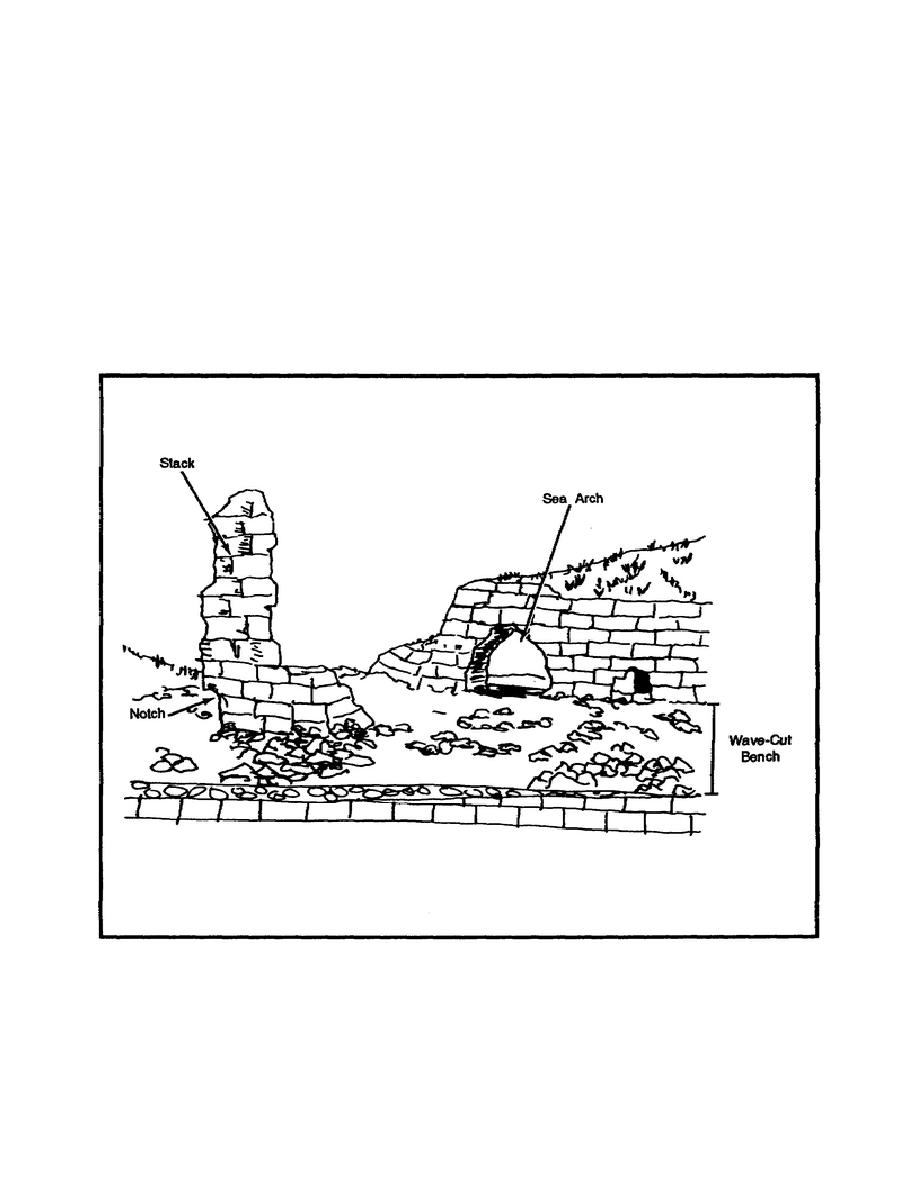
rock, they carve various types of erosional features. The most important ones are discussed in the following
paragraphs and illustrated in figure 2-12.
(a) Wave-Cut Cliffs. Wave-cut cliffs are seaward-facing cliffs that have been cut by wave action.
Due to the erosive power of the waves, a concave notch is carved into the base of a rock mass, undermining its
upper portion and causing it to crumble. The resulting rock fragments are then carried away by further wave
action. Eventually, a steep-sided, gradually retreating cliff is created. Areas of relatively weak rock may exist on
the cliff face, and these rocks are easily eroded, sometimes creating cavelike features called sea caves. In the
event that a sea cave is enlarged to the point that it cuts completely through the cliff, a sea arch is formed.
(b) Wave-Cut Benches. A wave-cut bench is a bench, or terrace, cut from the bedrock at the base of
a cliff. These benches slope gently toward the sea, and they gradually widen as their associated cliffs retreat
landward. Most wave-cut benches are covered with rock fragments that have fallen from nearby cliffs but have
not yet been carried away by subsequent wave action.
Figure 2-12. Erosional features of wave action
2-19
EN5341



 Previous Page
Previous Page
